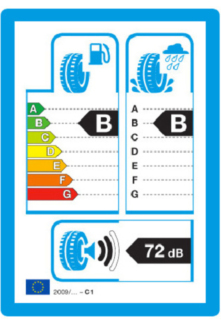
Tyres
We all know the confusion of heading into the garage to get a new set of tyres. With a market absolutely overflowing with options, it’s pretty hard to pick the right sort of tyres for you. While they may just seem like black circles to the un-initiated the impact that tyres can have on your everyday motoring (and bank balance) are not to be underestimated.
Thankfully, new EU legislation that’s just come in mean that all tyres must carry a label showing how green the tyre is, how good it is in the wet and just how noisy they are. The trouble is that according to OnePoll, 88% 2000 motorists asked are unaware that tyre labelling is coming into effect.
So, for a handy guide as to what it could mean to you, Kim O’Connor, Managing Director of chemical firm LANXESS UK answers a few questions about the labels.
Q: What are green tyres?
A: Green tyres refers to a new breed of environmentally friendly tyres about to appear on European markets. It is in response to new legislation making it mandatory from November 2012 to sell new tyres with labels that demonstrate their impact on the environment.
Q: What are the tyre labels and what information will be on them?
A: Tyre labels are similar to the ones found on white good products such as fridges and washing machines. Tyre labels will contain three pieces of information. First, they will demonstrate the fuel efficiency of the tyre using a categorisation system running from A-F. The category letter will be displayed on the label and each category will link to a colour, also on the label. A is bright green, F is dark red. The greener the category rating, the higher the fuel efficiency of the tyre, and the lower its environmental impact. Second, tyre labels will also offer information on wet braking distances so that motorists can be sure they are buying a safe tyre if they select one that is also highly environmentally friendly. The final piece of information will be the noise levels of each tyre at speed, measured in decibels.
Q: So what makes a tyre “green” and why do tyres impact the fuel efficiency of a vehicle?
A: The majority of tyres contain in excess of 200 ingredients, including 12 different types of rubbers with different capabilities. Green tyres contain a high percentage of neodymium polybutadiene rubber – a specialist synthetic rubber LANXESS produces that is specifically designed to retain more of the energy usually released by tyre deformation, reducing energy consumption and therefore fuel consumption.
As tyres roll along the road they deform to accommodate changes in the road surface. As the tyres deform they release energy in the form of heat. This energy comes from the engine and accounts for up to 25% of all fuel used. The majority of this percentage is to overcome the resistance of the tyres alone and doesn’t accounts for any distance travelled. Therefore, on average, one in every four visits to the fuel pumps only covers getting the tyres moving from standstill.
Q: What are the benefits of greener tyres?
A: Research from the University of Munich suggests that, on average, a family car travelling 20,000 miles per year can reduce its carbon emissions by up to 300 kg and drop its annual fuel bills by up to £250 by switching to a set of A-rated green tyres. The figures suggest that tyre labelling, if used properly, will have a significant impact on both our environment and our wallets.
Using the LANXESS Fuel Saving Calculator, motorists buying the most fuel efficient tyre (Grade A) can expect that if they spend an additional £100 on green tyres instead of standard premium tyres the extra cost will be recouped within 10 months.
Q: Are green tyres readily available in the UK?
A: Most major UK retailers will stock eco-friendly tyres but a considerable increase in variety is expected from November onwards. You will need to ask for them specifically but some manufacturers are producing them today.

